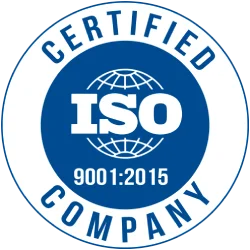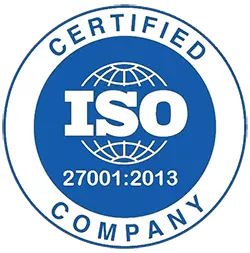What is 3D Model Optimization? It’s Methods, Tools, and Risks
If your games and 3D apps are running slowly or using too many resources, your 3D model files may be too large. In such a case, 3D model optimization is your answer for faster rendering, smoother gameplay, and reduced stress on system resources.
But what is 3D model optimization, and how do you do it? Let’s find out!
Optimizing 3D models: What does it mean?
3D model optimization is the reduction of the size and complexity of a 3D model in a way that doesn’t hurt its visual quality. It’s necessary to optimize high-polygon digital models so they perform better when used in different applications—specifically in those that use real-time rendering—like gaming, virtual reality (VR), augmented reality (AR), and mixed reality (MR).
A 3D or digital model’s size comes from mainly two factors: its geometry and texture. The geometry is the mesh, or the actual structure of the model, and is made up of polygons. Texture (made up of 2D images) is the skin that you put on the surface of a digital model.
Why is it necessary to optimize your 3D models?
High-polygon or high-poly models are a strain on resources, which causes longer load times, reduced frame rates, or system crashes. High-poly models may load fine on systems that have the necessary configurations, but on less powerful systems, you will notice inconsistent frame rates and a lag in gameplay.
Here are a few important reasons why you need to optimize your 3D assets:
- For faster load times and smooth experiences in web applications and AR/VR/MR environments.
- For efficient real-time rendering of game assets during gameplay and better performance.
- For conservation of system resources on low-grade systems, smartphones, tablets, etc. to promote better performance and gameplay experience.
When you optimize your 3D models, you can make the rendering process more efficient without having to compromise the visuals. Hence, video games, visualization applications, and extended reality applications (AR, VR, MR) can run smoothly and quickly while still delivering the best visuals.
Different methods of 3D model optimization
Optimization of digital models can be done in several different ways:
| Method | Description | 3D model optimization software/tools |
|---|---|---|
| Polygon reduction | Reducing the polygon count in a 3D model to optimize its performance. |
|
| Texture optimization | Reducing the model’s file size by compressing the texture images or reducing the resolution using file formats like JPEG or PNG with lower compression rates. You can also use texture atlases or packing methods to save multiple textures into a single image. |
|
| Level of detail (LOD) | Creating multiple simplified versions of the model with different levels of detail. Each version of the model is displayed based on the model’s distance from the viewer. Highly detailed models are shown when close to the viewer, and the less detailed models are displayed when the viewer is far away. |
|
| Mesh cleaning | Removing unnecessary vertices, edges, or faces from the model’s mesh to optimize the geometry and smooth out the surface. |
|
| Normal mapping | Using normal maps to simulate bumps or wrinkles without adding polygons to the object’s surface for the same effect. |
|
| UV unwrapping | Unwrap the UVs efficiently, i.e., without much stretching and wasted space, to reduce the size of texture files. |
|
| Streamlining rigging and Keyframe reduction (animation) | Simplify your model's rig by optimizing the bone hierarchies and reducing the number of keyframes to minimize the resources needed for playback. |
|
Software you can use for 3D model optimization
| Software | Description | Pricing |
|---|---|---|
| Blender | Is an open-source computer graphics software preferred by many 3D artists in the industry. Blender comes with multiple different options for 3D model optimization. | Free |
| Autodesk Maya | A 3D modeling, rendering, and animation software used by 3D artists for character modeling, interior design, and so on. It has useful tools for digital model optimization processes like polygon reduction, UV unwrapping, texture baking, etc. | Paid |
| Autodesk 3Ds Max | A 3D modeling, rendering, and animation software used by 3D artists for character modeling, interior design, and so on. It has useful tools for digital model optimization processes like polygon reduction, UV unwrapping, texture baking, etc. | Paid |
| ZBrush | An industry-standard digital sculpting, texturing, and painting software. It has powerful tools –Decimation and ZRemesher – you can use to deform and optimize meshes. | Paid |
| Simplygon | A popular tool in the industry for automatic 3D game content optimization. You can use it separately or integrate it with your preferred 3D modeling software, like Blender, Unreal Engine, Unity, Maya, and so on. | Paid |
| MeshLab | An open-source software with a variety of mesh processing tools you can use for mesh cleanups, simplification, and smoothening. | Free |
| Cinema 4D | A 3D modeling, simulation, and animation software widely used for creating visual effects and motion graphics. Use it to reduce meshes through polygon reduction and mesh smoothing. | Paid |
| Unity | It’s a 2D/3D engine that provides you with a system to develop interactive and immersive games, scenes, or apps in 2D, 2.5D, and 3D. In Unity, you can automatically create and configure LODs. | Free and Paid |
| Unreal Engine | It’s a game engine and 3D creation tool developed by Epic Games, much like Unity. It too can generate LODs automatically from the original model. | Free |
| RizomUV | RizomUV is a full-featured UV mapping application that can unwrap 3D models in seconds with the least amount of stretching. It helps you unwrap UVs most efficiently so there are no distortions. | Paid |
| xNormal | xNormal is a free app for texture map baking (normal maps, ambient occlusion, etc.) | Free |
Risks associated with 3D model optimization
As advantageous as optimization is, there are some things you have to be careful about when you go through the process.
Reducing the polygon count too much can result in a loss of detail, thereby a reduction in the visual quality of the model.
Don’t forget to compress your textures when you are working on optimizing the geometry, as it can lead to big files and slower load times.
Always test out which 3D model optimization strategies work well on all platforms and devices. Settle on the optimization process that works consistently wherever it is used.
Finally…
3D model optimization works on the same logic as the optimization of any process, workflow, product, etc.- give the best results by consuming minimal resources. Optimized digital objects are easier to host and faster to render and load. It is very vital, especially in applications that rely on real-time rendering.
With so many new 3D technologies using real-time rendering (like extended reality applications), it is even more beneficial to make it a habit to keep all your 3D assets optimized.
Contact Us

